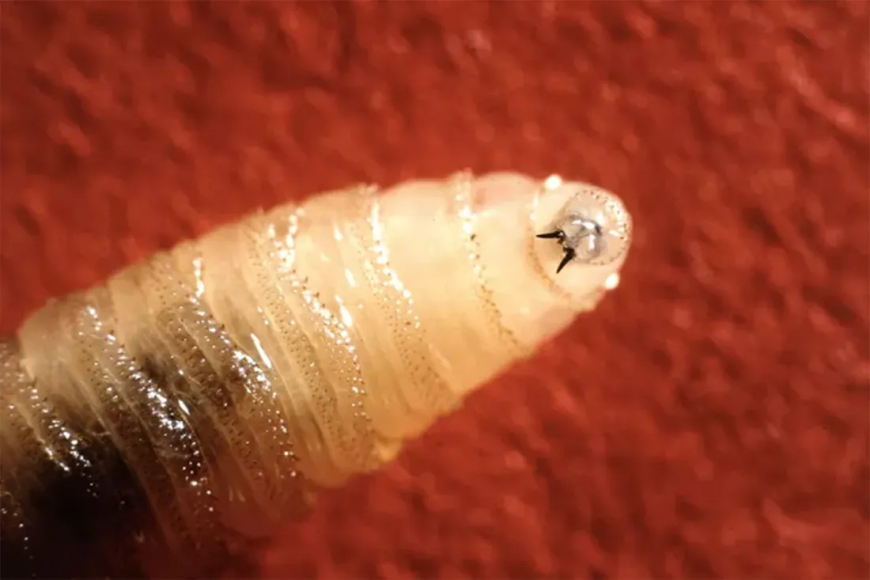U.S. Confirms Rare Screwworm Infection: A Cautionary Tale for Public Health
On Tuesday, August 26, 2025, health officials confirmed the first US case of rare screwworm infection in decades. Learn about containment efforts, parasite risks, and travel advisories.

Philadelphia, August 26, 2025 – On Monday, August 25, the U.S. Department of Health and Human Services confirmed the nation’s first travel-associated human case of New World screwworm—a flesh-eating parasitic fly infection—since the mid-20th century. The patient, who recently returned from El Salvador, was diagnosed on August 4, and has now fully recovered, per Maryland health officials and the CDC.ReutersAP News
Understanding the Threat: What Is the Screwworm?
The New World screwworm, scientifically known as Cochliomyia hominivorax, is a parasitic blowfly whose larvae burrow into living flesh—causing a condition medically termed myiasis. Unlike most maggots that feed on dead tissue, screwworm larvae invade healthy tissue, worsening wounds and drawing more flies.Wikipedia
Historically, the United States successfully eradicated the screwworm via the sterile insect technique—a pioneering pest-control strategy that disrupted the fly’s reproduction by releasing sterile males. Eradication was largely complete by the 1960s, but new cases emerged in southern Mexico by late 2024, prompting serious concern.WikipediaScientific AmericanSuccessful Farming
Breaking Down the Lifecycle (Infographic Above)
The infographic illustrates the screwworm’s cycle:
-
A female lays eggs on open wounds or bodily openings.
-
Larvae hatch and burrow into tissue within days.
-
After feeding for about a week, they drop into the soil to pupate.
-
Adult flies emerge in about a week, mate—with females mating only once—and repeat the cycle.
These biological traits make swift containment efforts critical.Wikipedia
Containment Efforts & Travel Advisories
Officials have moved quickly:
-
USDA and CDC are reviving sterile-fly release programs—building on proven past successes.
-
A sterile fly production facility is under construction in South Texas, and programs are planned for northern Mexico.The TimesReutersScientific AmericanAgroLatam
-
Livestock import halts from Mexico have been enacted to reduce cross-border spread.WikipediaReutersThe Times
-
Public risk remains very low, according to CDC and HHS statements, and there is no evidence of human-to-human transmission.AP NewsReutersFox News
Officials are urging travelers—especially those visiting rural regions or animal-focused destinations—to monitor and protect any wounds, seek prompt medical evaluation if necessary, and inform physicians about any travel to areas with active screwworm outbreaks. AP NewsThe Times of India
Why This Matters
-
Public Health & Agriculture: Though the immediate health threat is low, the screwworm poses a major danger to livestock and could have severe economic impacts—particularly in states like Texas, which is deeply invested in cattle production.ReutersWikipediaThe Times
-
Historical Significance: The return of screwworm to the U.S. brings us face-to-face with a bygone era of agricultural peril, reminding us of both the triumphs of eradication and the fragility of those gains.
-
Renewed Vigilance Required: Continued global travel, trade, and climate shifts underscore the importance of surveillance, swift response systems, and sustained funding to prevent resurgence.
Summary Table: Key Details
| Item | Details |
|---|---|
| Date Confirmed | August 4, 2025 (diagnosis); publicly disclosed August 25, 2025 |
| Patient Travel | Returned from El Salvador |
| Status | Recovered; no spread detected |
| Containment | USDA/CDC planning sterile-fly release, halted livestock imports, established new facilities |
| Public Risk Level | Very low; no human-to-human transmission |
| Agricultural Risk | High—potential economic impact if livestock infections occur |
| Historical Context | First human case in U.S. since screwworm eradication; resurgence threatens decades of progress |











